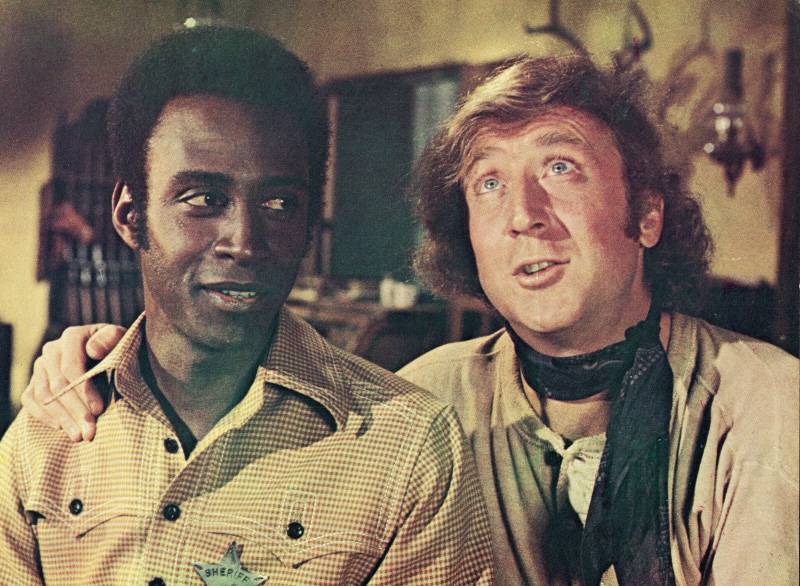So, Blazing Saddles is not really “like many a Western before it.” Brooks was upending Hollywood’s version of the Old West, much as Robert Altman‘s dark, land-grab drama McCabe & Mrs. Miller had, three years earlier. He just took a different tack. To set his comedy in motion, he had Harvey Korman‘s scheming politician come up with the idea of hiring a Black sheriff to scare the townsfolk of Rock Ridge away from their town, so he can buy it on the cheap before any of them learns the rail line will soon be coming through.
His ploy works. When Cleavon Little’s Sheriff Bart rides into view, they are indeed less than welcoming. But they are also less than bright — foiled in their plan to shoot their new sheriff, for instance, when he points his gun at his own head and takes himself hostage.
‘He’s like wet sauerkraut in my hands’
Bart then teams up with Gene Wilder‘s Waco Kid, a hung-over gunslinger, at which point the film adopts the rhythms of a black/white buddy comedy. Until, that is, it turns into a spoof of The Blue Angel, as Madeline Kahn’s seductress-for-hire Lili Von Shtupp croons a gloriously off-pitch “I’m Tired” and sets about seducing Sheriff Bart. “He’s like wet sauerkraut in my hands,” she purrs in an accent that suggests she got vocal coaching from both Marlene Dietrich and Elmer Fudd.
To satirize 1970s racial prejudice using 1870s characters, Brooks opted to become an equal-opportunity shredder of genres and conventions. A horse gets punched, as does an old lady. Even Busby Berkeley musicals come in for a brief ribbing when a brawl literally breaks the fourth wall and the cast crashes into a dance number on a nearby soundstage.
And of course, there’s that campfire scene: cowboys consuming pots of coffee and platefuls of baked beans, with predictable — though unusual for film — results.
‘Bury it.’
When studio executives first saw Blazing Saddles, they were not amused. One distributor suggested they “bury it.” Others wanted rewrites. But Brooks’ contract gave him final cut, and he flat-out refused to make changes.
So on Feb. 7, 1974, the studio opened the film as a test in three cities — NYC, LA, Chicago — considered the most likely to get Brooks’ Borscht Belt sense of humor. Critics were dismissive, but even the most negative reviews conceded that audiences were howling.

9(MDAxOTAwOTE4MDEyMTkxMDAzNjczZDljZA004))

